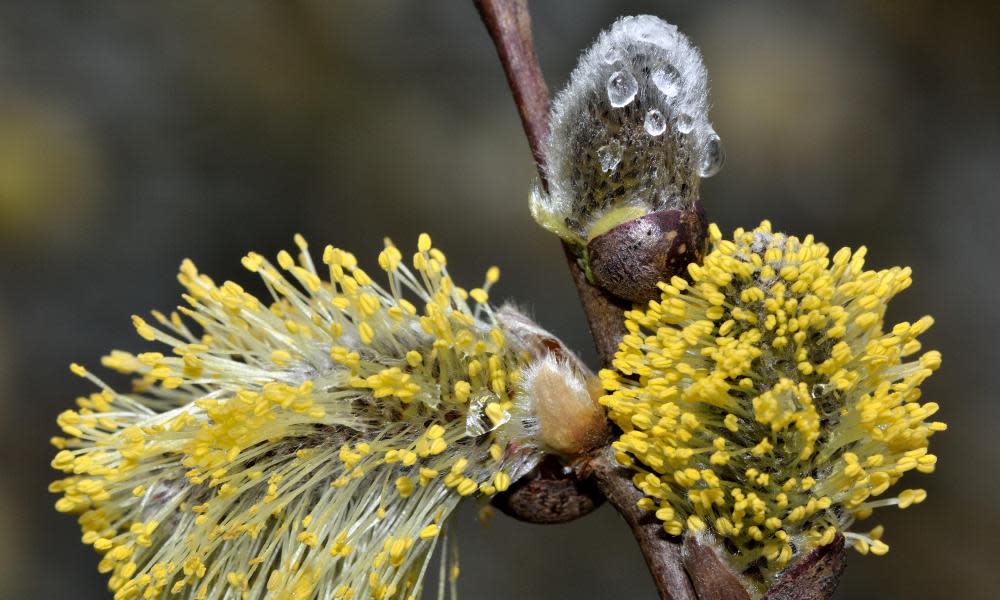Country diary: The many uses of the grey willow

I looked straight up at a hovering kestrel. Her face appeared quite round, almost owlish, even more so when she lowered her head a little. Kestrels can give the impression of immobility as they watch their prey, but the only part of this doughty falcon not moving in the breeze was her head. She wriggled against it, tail angling, wings tilting. Kestrels also have the clever trick of allowing their bodies to drift fractionally backwards against the force of the wind, while lengthening their necks to keep their heads still, before flapping again to haul their bodies forward and squash their faces again. It saves them a remarkable amount of energy.
Imitating the kestrel, I took a step backwards to stand more comfortably, while at the same time stretching my neck to keep my eyes fixed on the hovering bird. It proved harder than I expected. My boot disappeared into a void among the grassy tussocks and my lower leg was instantly soaked with cold water. By the time I stopped cursing, the kestrel had slid away, and so I struggled out of my freezing trap with the help of a grey willow that was thriving on this sodden ground.
These scruffy, shrubby trees can be as prosaic as the kestrel is ethereal, especially when stripped of their leaves. Another name, common sallow, seemed appropriate for this nondescript specimen, its branches black and greasy against the grey winter sky, indistinct from its cousins reaching in a dense mass across the boggy moor.
We have a cultural expectation of what trees should look like, partly predicated on their commercial value, which is why children draw them with tall, straight stems and a bobble on top. These willows fell into the human category of “scrub”: much less impressive than a mighty oak. Yet they offer a different sort of wealth: early nectar to bees and other insects after the long winter months, their leaves food for caterpillars that will attract insect-eating birds. Best of all will be the yellow catkins, a prospect of riches to brighten the gloomiest day.
• Country Diary is on Twitter at @gdncountrydiary

 Yahoo News
Yahoo News 
